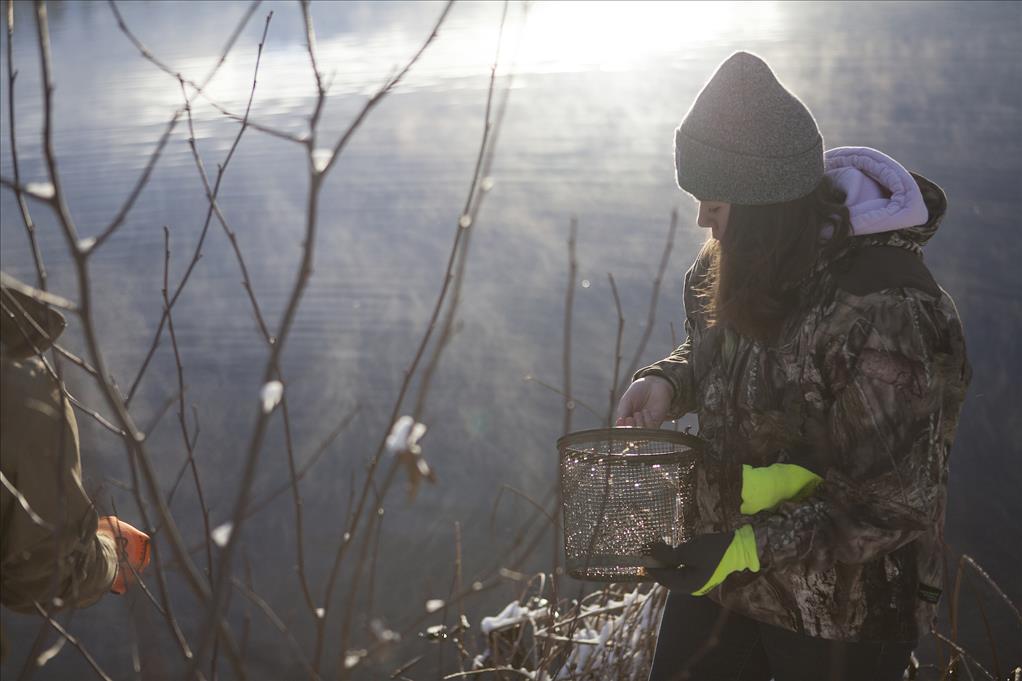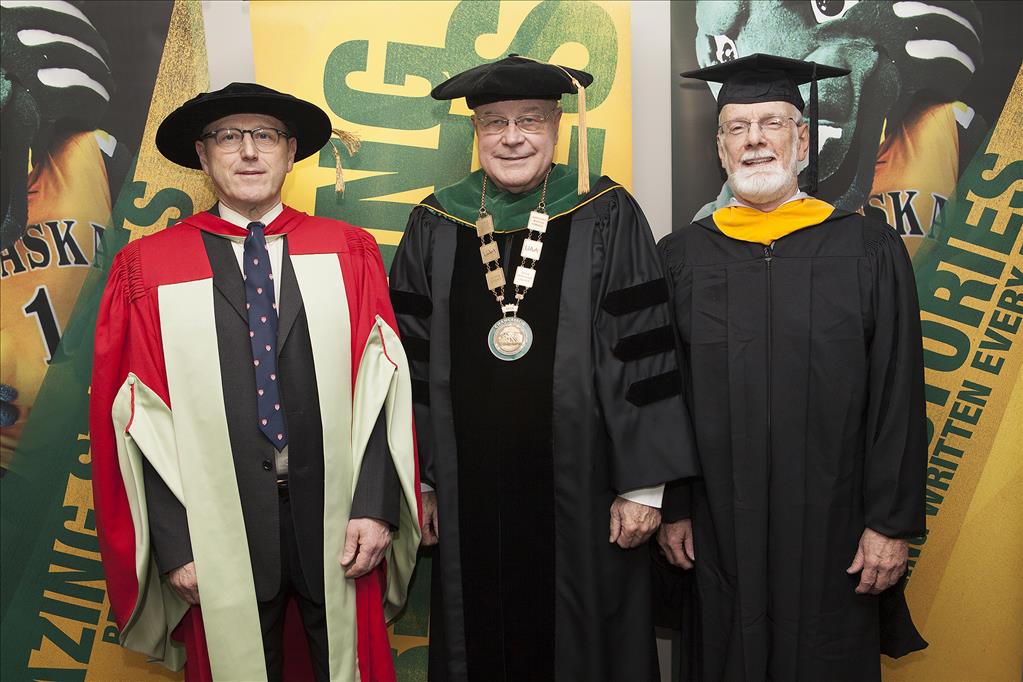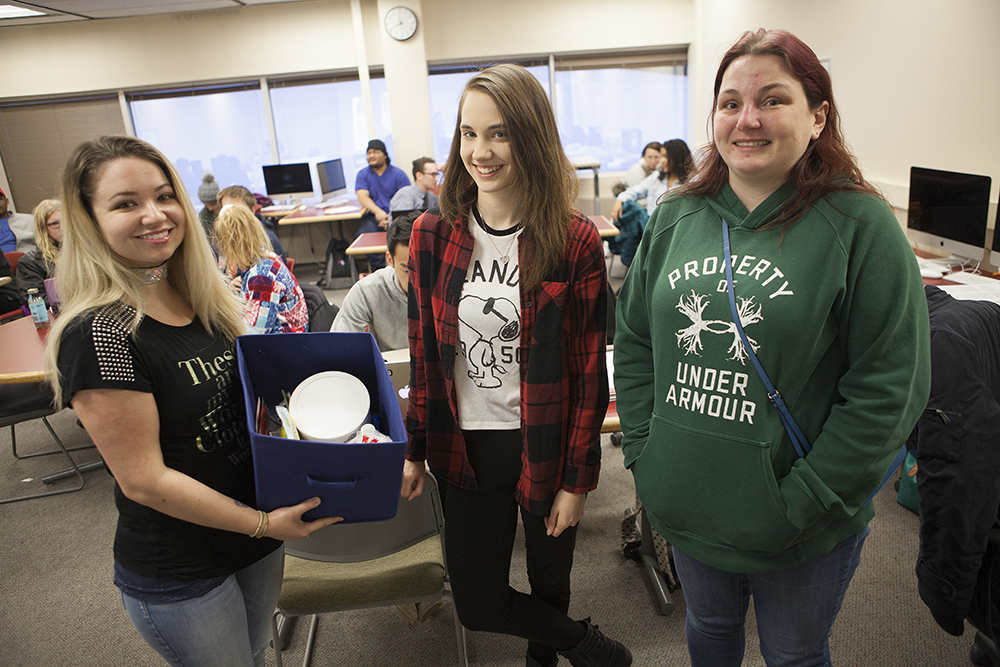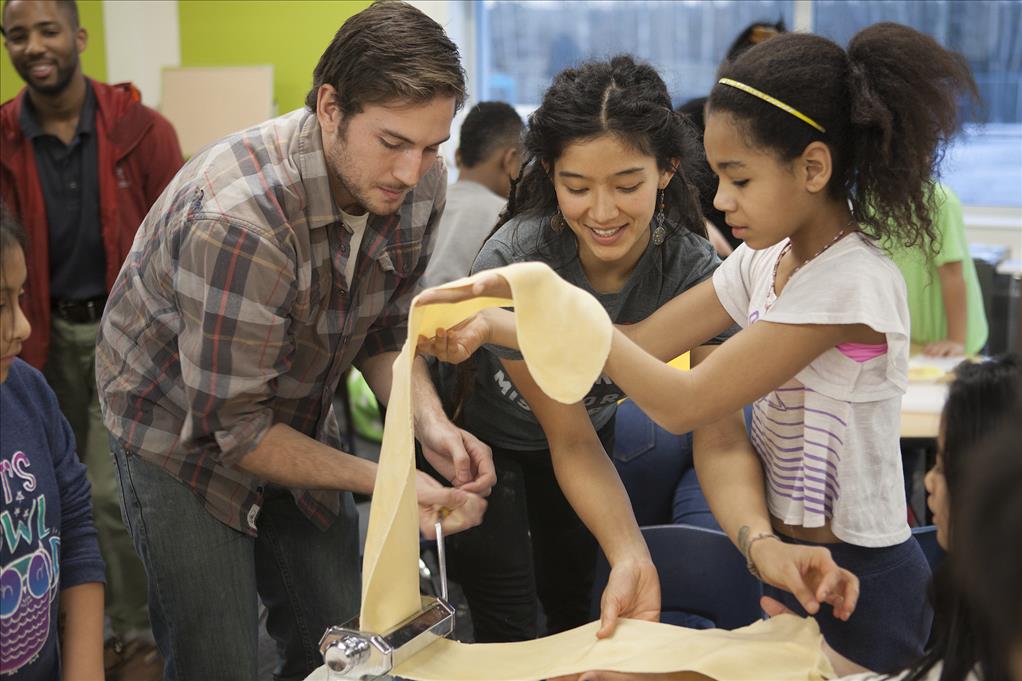Alaska Native Studies Conference features glimpse into traditional 'Horse Medicine'
by Kathleen McCoy |
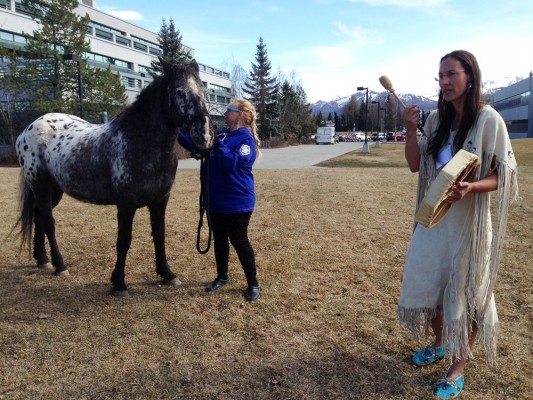
Yvette Collin, right, and Kristie May Parsons, on the left with Pocahauntus, taught a class on Native American Horse Medicine. (Photos by Kathleen McCoy/UAA)
The fourth annual Alaska Native Studies Conference featured 48 workshops or panels spread over two days, April 15-16. Most sessions engaged scholars and audiences within the many classrooms and lecture spaces within Rasmuson Hall.
One session was different. It featured a live horse.
Maria Williams, director of UAA's Alaska Native Studies Program, said she'd unwittingly booked that gathering into Room 112 on the ground floor of the business building on the west side of campus. "Then I started getting calls and emails, asking if there was a patch of grass somewhere, so they could park their horse trailer? I knew then, we'd need to move them out of RH 112," she said with a laugh.
The unmistakable horse ended up out on the dried-out winter grass of Cuddy Quad on Saturday afternoon. The horse looked a little like an Appaloosa. Black freckles scattered across her cream-colored back. Her head and legs were a kind of rusty gray color. Her coat was thick and curly. Yes, curly.
A registered Curly Horse
I had to know more. I walked up to meet her caretaker, Kristie May Parsons, a woman wearing a vivid blue kuspuk bearing the name of UAF's Indigenous Studies doctoral program, leading the horse by a halter, letting it munch among the leaves and grass of the quad. She was happy to talk about Pocahauntus. (More on her unusually name spelling in a moment.)
"She's a registered Curly Horse," said Kristie, "from the Nez Perce Indian bloodlines. She's shedding right now. Her big curls are all falling out."
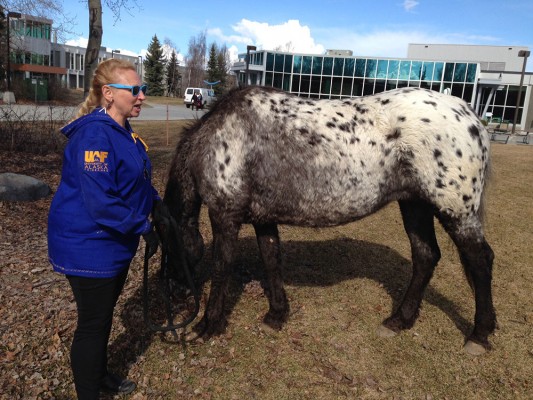
Kristie May Parsons with Pocahauntus, on the Cuddy Quad.
Kristie said Pocahauntus is rare, one of only about 5,000 existing Curly Horses. She said they descended from the wild mustangs in the Yukon and the Lower 48, after an exceptionally cold winter had killed most wild horses, except for Curly Horses.
Kristie told of a man named Lyle "Joe" Mead who recognized the unique qualities of Curly Horses, and bred them in the Dakotas. On his way to Alaska in the 1950s, he spotted some Curly Horses in the Yukon, befriended people living nearby and ended up purchasing some and bringing them in to Alaska. Pocahauntus was one of his. Kristie, who says the name reflects Joe Mead's quirky sense of humor, got Pocahauntus from Joe's niece after Joe died.
Kristie researched the Curly Horses of Alaska and Canada by interviewing Athabaskan elders in Alaska and First Nations People near Aishihik Lake located near Haines Junction. She learned that two herds of Curly Horses migrate between the Yukon and the Wrangell Mountains and the Yukon and into lower Canada. The horses are considered an invasive species in parklands, Kristie said, and land managers try to eradicate them.
A horse on Cuddy Quad attracts attention. One young woman with her own curly hair fluttering in the chilly April breeze stopped and watched for a few minutes, then took off, saying only, "We have the same hair texture!"
Another stopped by and said, "I think we should have her here every day!"
Caretaking Native horses
The session leaders called their class, "The Medicine Horse Way: The Indigenous Peoples of the Americas and their Traditional Horses." All three shared teaching duties: Kristie, and the husband and wife team of Yvette and Sean Collin.
Yvette and Kristie are both doctoral student in the UAF Indigenous Studies program. Sean is a lawyer and an assistant professor of business at the University of Northern Alabama, near where the couple live.
Together, the Collins have founded Sacred Way Sanctuary, acreage in Alabama that is home to about 178 horses of Native American bloodlines. Yvette said theirs is the third or fourth largest herd of Native horses in the world.
Pocahauntus didn't make the journey from Alabama to Alaska, though. She belongs to Janey Moen of Anchorage, but Kristie trained her and uses her for a commercial trail ride leader in Alaska. Pocahauntus only had to make the short jaunt across town from the Moen Holmestead Stables off Goldenview Drive.
Class time
Yvette, who says she is of Cheyenne, Arapaho, Comanche and Mayan descent, wore a beaded buckskin dress and moccasins. She pulled a small drum out and began the class with a song given to her to share, she said, from a woman who'd been healed among spirit horses. About a dozen students circled Yvette on the grass as Kristie and Pocahauntus stood nearby.
History has it that European explorers introduced horses on their conquests to the New World. Not so, Sean and Yvette say. In an academic paper Yvette produced for her doctoral program, called "The Return of the Southern Horse," she documents archaeological findings and writings that indicate horses survived the Ice Age and predate colonization by Europeans.
Yvette writes:
"The world has not been easy for the Native Peoples of the southeastern United States or their traditional Native ponies. However, thanks to the determination of both the descendants of these horses and the people who once shared every facet of their lives with them, they are still here.
"...There are estimates of roughly 250 "high content" Choctaw/Cherokee/Chickasaw horses left in the world today, and roughly 800 other Native horses that share this DNA combined with the DNA of other Native lines. What this means is that the 'end' of this story is yet to be told, as The People still have an opportunity to intervene on the behalf of these creatures as their ancestors did. The Southern Native Horse is still here. For how long is not solely for them to decide but for us."
Horses and healing
After singing, Yvette told how she was healed from post traumatic stress through the help of a spirit horse. She explained that in traditional healing, a horse can take on a human illness, but then the human has to sync with the horse to release the toxins, or the horse can get sick as well.
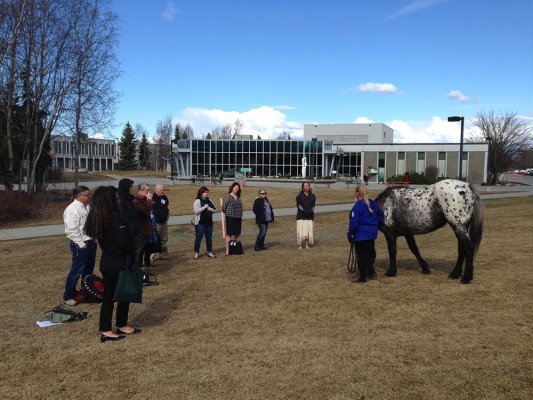
About a dozen people gathered to learn more about Native American healing traditions that involve horses.
"Most tribes we work with have a similar explanation for this," Sean said. "It's not universal, but it's similar. The basic concept is that your grandmothers and grandfathers, or in Christian terms, angels, can come into an animal, into a horse, if the right conditions are created.
"Through that horse aligning itself with you and with Heaven, then, basically the Creator can heal you. That is the concept. There are different words for it, different explanations, but that is the concept.
"In modern terms, as Yvette mentioned, there is a scientific explanation which is the alpha waves that the horses emit. We also emit alpha waves when we are in a meditative or prayer state. Those alpha waves match. They've gotten that far on the research."
Invited participants
Yvette invited anyone interested to have a moment with Pocahauntus. The sessions were short and silent. Typically, a person stepped up next to Yvette and near the horse. No one touched the horse; they just stood there.
Yvette and Sean each would raise their hands shoulder high to create a "sacred space" near Pocahauntus' head and eyes.
"What I am doing with my hands," said Sean later, "is I am praying to connect the horse, the Creator and the ancestors to this person. What you saw me do is trying to be a hollow bone for the Creator, to empty myself out for that moment to help ancestors do what they would do, between the ancestors and the Creator."
Pocahauntus had brief sessions with about five people. No one shared names, or reasons why they wanted time with the spirit horse. Occasionally, Pocahauntus whinnied and snorted.
"She will be tired tomorrow," Yvette said. "But there won't be any physical side effects because we have done our part. We kept the space clear for her. It was always reciprocal for her."
The hour and a half session seemed short. Afterward, the class scattered quickly, seeking warmer quarters back inside Rasmuson Hall.
Written by Kathleen McCoy, UAA Office of University Advancement
 "Alaska Native Studies Conference features glimpse into traditional 'Horse Medicine'" is licensed under a Creative Commons Attribution-NonCommercial 4.0 International License.
"Alaska Native Studies Conference features glimpse into traditional 'Horse Medicine'" is licensed under a Creative Commons Attribution-NonCommercial 4.0 International License.










